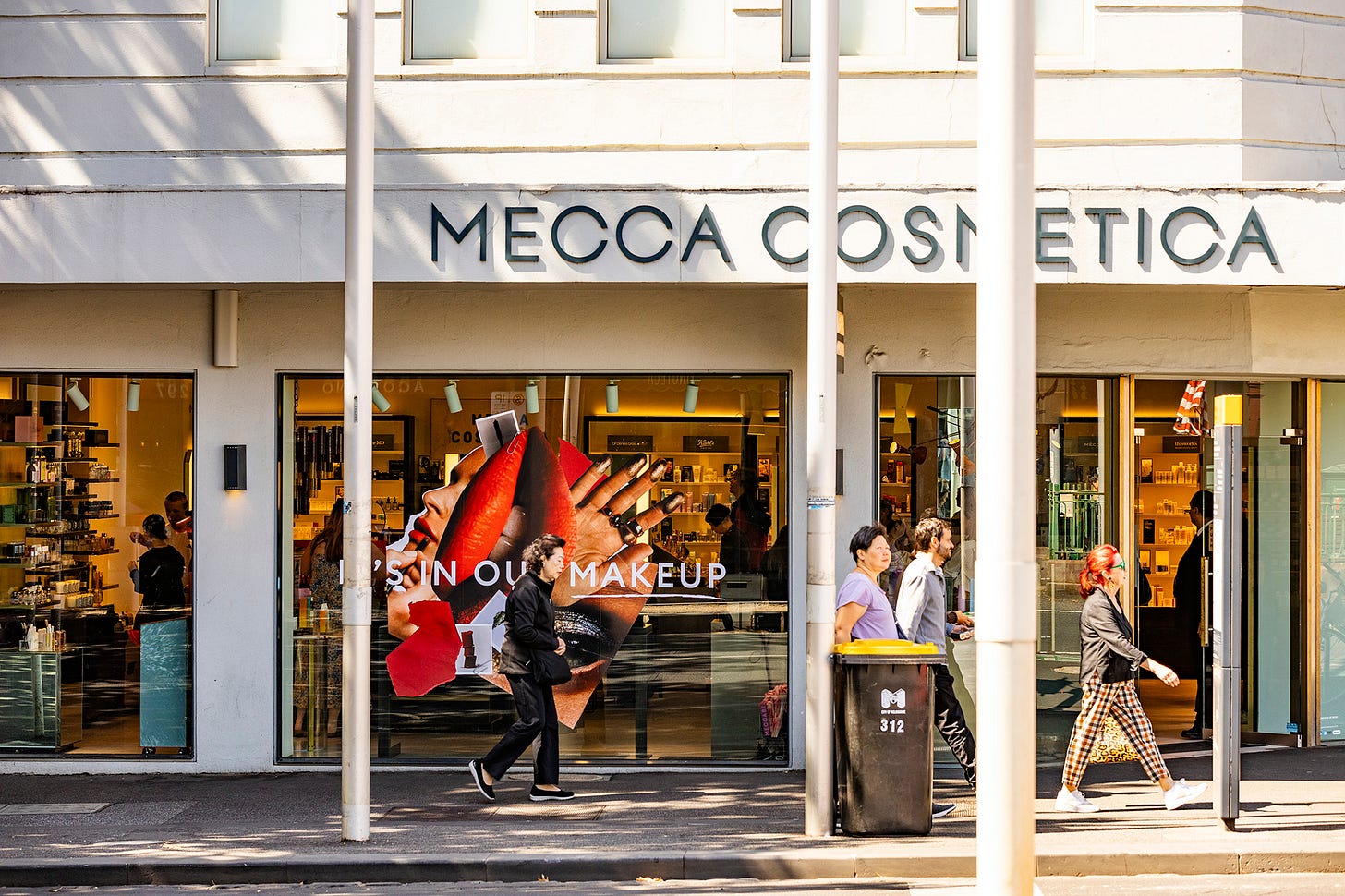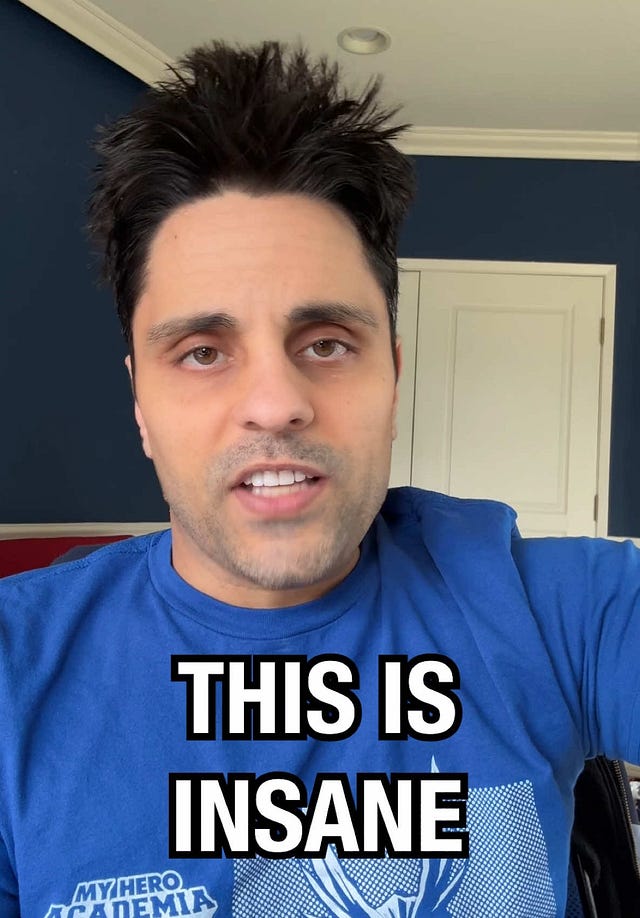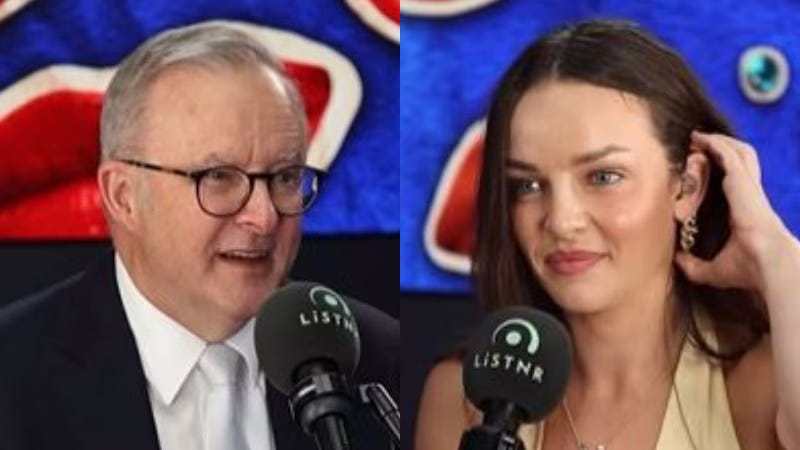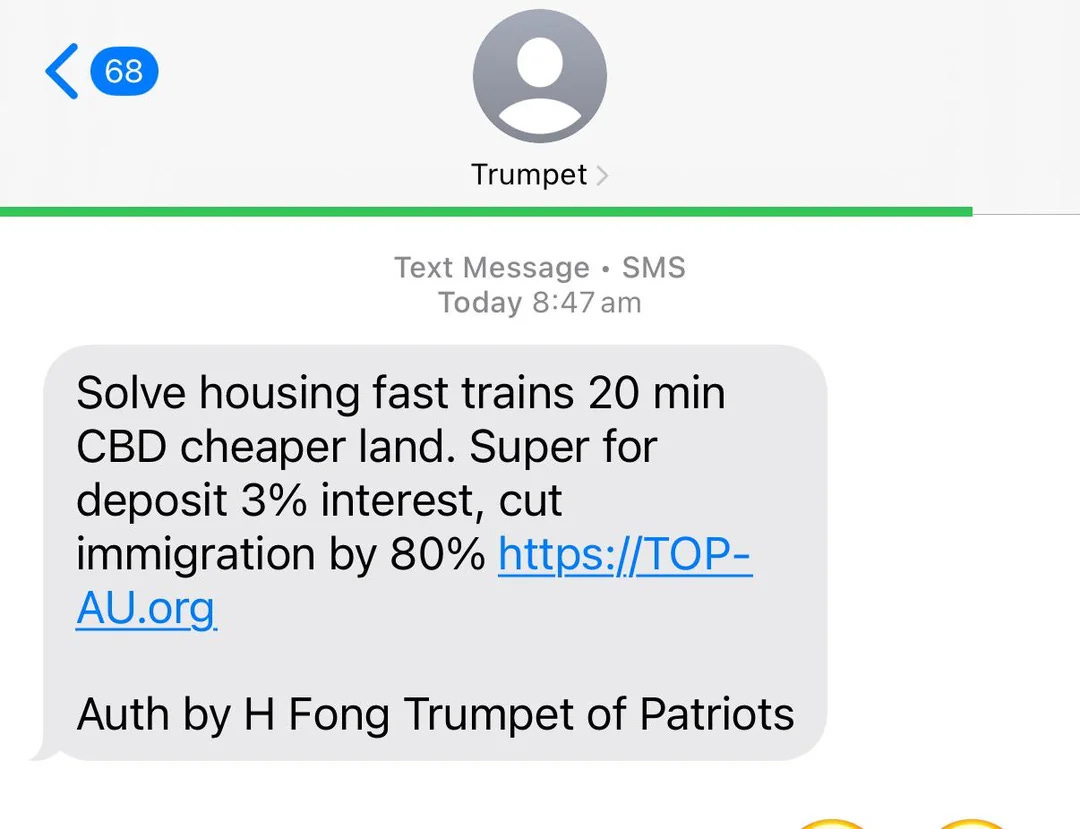Why Consistency Matters More Than Clicks
An analysis of brand building in the 2025 federal election
Marketing and brand building have been part of politics since the beginning of democracy itself where Ancient Greek leaders used rhetoric and persuasive communication to convince voters.
Things began to develop in the 16th century where Protestant Reformers harnessed the printing press to create print media pamphlets, posters, and broadsheets to persuade public opinion. Not too dissimilar to the modern political marketing techniques we see today, 500 years later.
This year however, there are a lot of lessons to take from how to build a successful political brand across new forms of digital marketing where it no longer lives in just the newspaper, but has infiltrated nearly every aspect of our daily lives.
To illustrate this — last weekend I found myself trailing my partner on what felt less like a shopping trip and more like a strategic mission through the Mecca store in Carlton.
I watched as she expertly located her usual cleanser, debated swapping out a serum, and consulted staff to pinpoint the exact shade of lipstick she needed.
At the till, the assistant didn't even need prompting. It was part of the ritual to say that she had a Beauty Loop gift waiting, handing over a small, curated package tied to her membership tier.
Standing there, I was impressed by how consistent the whole experience felt. It wasn't just the physical store. It was the website, the design, the emails, the rewards program.
Every single touchpoint feels meticulously considered, instantly recognisable as Mecca. It’s a feeling of curated reliability. You always know exactly what you're getting, and it feels good because of that coherence.
Now, let's crash cut from that seamless operation to the political battlefield of the recent Australian federal election.
One moment, I’d see a party leader attempting statesmanlike gravitas on TV. The next, their campaign's TikTok feed would be churning out absurdist, almost baffling brain rot seemingly designed by committee to capture Gen Z attention.
We had candidates trying to look relatable streaming Fortnite, then attempting to sound authoritative on the housing crisis minutes later. Adam Bandt was literally DJing at Revs.
Watching it unfold, I couldn't shake the contrast with that smooth, predictable, trustworthy feeling of the Mecca brand.
Political World Building
In the 2025 election, for the first time, Gen Z and Millennials weren't just a group of voters, they made up a third of all voters. This led to political parties trying to appear relatable, and reach them where they are.
For me, it wasn't just about slick marketing versus clumsy campaigning. It pointed to something much more fundamental, a concept I think of as world building.
Understanding this feels more critical than ever, because the ground has permanently shifted from the days of broadsheet advertising and soapboxes.
Think about how brands like Mecca meticulously construct a consistent, recognisable world. Every interaction reinforces the same identity, building trust.
Now contrast that with the Liberal Party, for instance, who jumped headfirst into TikTok early to reach first time voters, using AI for videos that hit impressive numbers and pioneering the brain rot content.
They created characters like 'Tim Cheese,' even a game called 'Escape Albo'. On the surface, it looked like savvy, platform native engagement generating millions of views.
The Liberal Party TikTok account now has more than 100k followers, interestingly over 80% of them young males.
But the question is, did it build a coherent and trustworthy Liberal world?
I'd argue it often felt more like chasing trends than establishing authentic connection.
And the fragility of this approach blew up when a US creator Ray William Johnson publicly called out the Liberal Party on election day to his 18.5 million followers.
 Tiktok failed to load.
Tiktok failed to load.Enable 3rd party cookies or use another browser
The party allegedly copied his style, then blocked his account so he couldn’t see it. It resulted in a response video that went viral telling people to "vote for the other guy".
It exposed the world they were trying to project as potentially hollow, a facade easily shattered. It felt similar, in a way, to their candidate Amelia Hamer trying to appear relatable by claiming to be a renter, only to be called out by The Age for being a landlord of not one but two properties.
These moments instantly destroy any carefully constructed 'world' of authenticity.
Contrast that fragility with the strength we saw in independents like Hamer’s opponent Dr. Monique Ryan who as of yesterday maintained her seat.
Their power, it seemed to me, came from building genuinely strong personal brands. Their political 'world' felt consistent simply because it was authentically them, across different platforms and interactions.
 Tiktok failed to load.
Tiktok failed to load.Enable 3rd party cookies or use another browser
Labor, interestingly, seemed to navigate this complex landscape with a more calculated world building or perhaps world integrating. Yes, they engaged with trends and created stylised 'thirst trap' edits of the PM. But they also held influencer briefings and paid close attention to new media.
They invested heavily in stepping into existing, trusted worlds. Albanese appearing on content creator Abbie Chatfield's podcast was one of these moments.
He didn't try to make her platform fit his usual political mould, he entered her world, speaking to an audience where she had already built massive engagement and trust.
Chatfield’s podcast is one of the largest in Australia gaining 400k downloads per month as well as distribution across her 1m collective followers on TikTok and Instagram.
This appearance didn’t go without controversy. This lead to Liberal Senator Jane Hume calling for investigation into whether Chatfield’s social media content should have been classed as electoral material.
After being cleared by the AEC, finding that appearances were voluntary, Chatfield bit back saying “It’s so funny that the Liberal Party can’t comprehend that maybe young people, aka influencers, just f—ing hate the Liberal Party”
Leader of the Greens, Adam Bandt also appeared on Chatfield’s podcast. The Greens were very quick to take up new media appearances and stunts across social media.
While some analysts labelled their campaign as less conventionally cohesive, with individual stunts like the toothbrush taking prominence, these actions were arguably designed for maximum impact within specific online communities.
The Greens achieved their highest ever first preference vote. Analysts have noted, this is potentially due to being the highest enrolled election. However their TikTok has amassed over 200k followers, almost double the major parties.
While the tactics might have seemed scattered, the underlying world the Greens represent appears to have been deeply resonant for their younger audience.
Their 'world' is built on often uncompromising values focused intensely on climate action, housing affordability, inequality, health, and social justice, hitting all five top issues for young voters identified by Monash.
This very clarity and strength of conviction, while powerfully attracting their base, naturally creates polarisation. Their 'world' isn't designed to appeal broadly, it's built for those who share those specific, deeply held values.
The Greens’ stance on Gaza and Drug Reforms, for example, according to analysts may have alienated some voters, particularly older progressives who felt the party’s approach was too one-sided.
On the other extreme. The Trump praising minor conservative groups seemed to bypass world building altogether.
Instead of inviting people into any narrative, their approach often felt like shouting at potential voters through aggressive tactics like unsolicited text message blasts or saturating streaming services with ads.
This didn't feel like an attempt to build connection or trust; it felt intrusive and, for many, likely achieved the opposite, potentially annoying the very voters they needed to reach. It highlighted that simply spending money and playing to fears doesn't build a world people want to belong to.
Without a coherent world, all those millions of views risk being just noise, failing to build the belief needed to actually win hearts, minds, and, ultimately, votes.
















I'm voting for Mecca at the next election.
Seriously, I never heard what values the Liberals actually stand for? Unless Nuclear, non-welcome to country and increased personal taxes are values?
Excellent article. Subscribers don’t always convert to opinion sometimes podcasters are nothing more than entertainment.